Adress
61632 Tócuaro, Michoacán, México.
GPS
19.541075049222, -101.69393447914
KNOW MORE PLACES
VISITA OTRAS LOCALIDADES
The history of the Tócuaro masks is deeply rooted in pre-Hispanic and Spanish traditions, with a legacy that has been passed down from generation to generation. Before the arrival of the Spanish, indigenous cultures in the region already used masks in their rituals and ceremonies to represent gods, animals and natural forces. With colonization, these traditions merged with Catholic elements, giving rise to the masks we know today.
One family that has excelled in the creation of these masks is the Horta family, especially Felipe de Jesús Horta Tera and his father Eustacio Horta Castillo. Eustacio Horta Castillo was one of the first mask makers in the community of Tócuaro. He learned the traditional woodcarving techniques from Juan, a 95-year-old craftsman. Eustacio later passed this knowledge on to his son Felipe when he was just 12 years old. Since then, Felipe has dedicated more than 45 years to perfecting and reinventing these masks.
The artisans of Tócuaro use woods such as copalillo and avocado to create their masks. Each mask is hand-carved and decorated with vibrant colors, depicting figures of devils, animals, and mythical characters. These masks are featured in the pastorelas, where characters such as Luzbel, Astucia, and Pecado confront the archangel Michael.
Felipe Horta has brought his art to festivals and cultural centers in the United States and Europe, promoting the rich tradition of Tócuaro abroad. His work has been recognized internationally, including an exhibition in Paris, France.
Estas máscaras no solo son piezas artísticas con cualidades mágicas y fantásticas, sino que también tienen un profundo significado simbólico y cultural. Representan la dualidad del bien y el mal, la vida y la muerte, y son utilizadas en diversas danzas tradicionales, como la Danza de los Viejitos y la Danza de los Cúrpites, donde los bailarines se disfrazan con estas máscaras para representar diferentes personajes y mitos.












